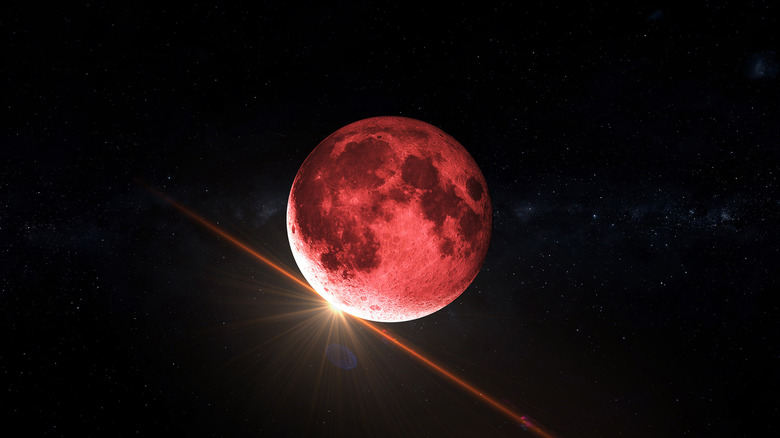Don't Miss 2023's Beautiful Strawberry Moon This Weekend
Spring is finally giving way to summer, which means shorter nights for skywatchers to get their hours in. Despite the fact the sun is up longer, the sky still has plenty to offer this month, including 2023's Strawberry Moon, a full moon known for its pinkish coloring. That's not all, either, as Jupiter and Mars will both be visible in the sky later this month, too.
Those wanting to make the most of their time skywatching this month will need to sacrifice a little sleep, especially for the good sightings of Mars and Jupiter. But if you're as passionate about the skies as many of us are, that probably won't be much of an issue. Last year's Strawberry Moon was absolutely stunning, so you won't want to miss this one.
Of course, having a great idea of what to look out for this month is going to be key, and we're already starting things with a bit of a bang as the 2023 Strawberry Moon will peak this weekend, on June 3. The best time to see the full moon will be at roughly 7:39 a.m. Eastern time on Saturday morning. That means you'll need to get up extra early on the weekend to grab some good snapshots.
The Strawberry Moon is known for its pinkish hue, and it's also known as the Rose Moon, the Honey Moon, and even the Mead Moon. It's the southernmost full moon of the year, allowing for that beautiful and iconic amber-like tint for which the moon is named.
June is also home to the summer solstice, which will happen at 10:58 a.m. on June 21. The sun will reach its most northerly point in the sky, granting us humans the longest day of the year. So if you plan on watching the stars that night, you best be ready for a short window.
If you don't mind staying up late (or getting up early) to see sights like 2023's Strawberry Moon, you can also look forward to watching Mars and Venus draw closer to each other every evening. At the same time, Saturn and Jupiter – currently going head-to-head for the planet with the most moons – will be visible at times, too, with Jupiter trailing behind Saturn throughout the month.
While the days might be longer, the nights are still jam-packed with things to see. Check out NASA's What's Up video, embedded above, for even more sights to look out for this month.
